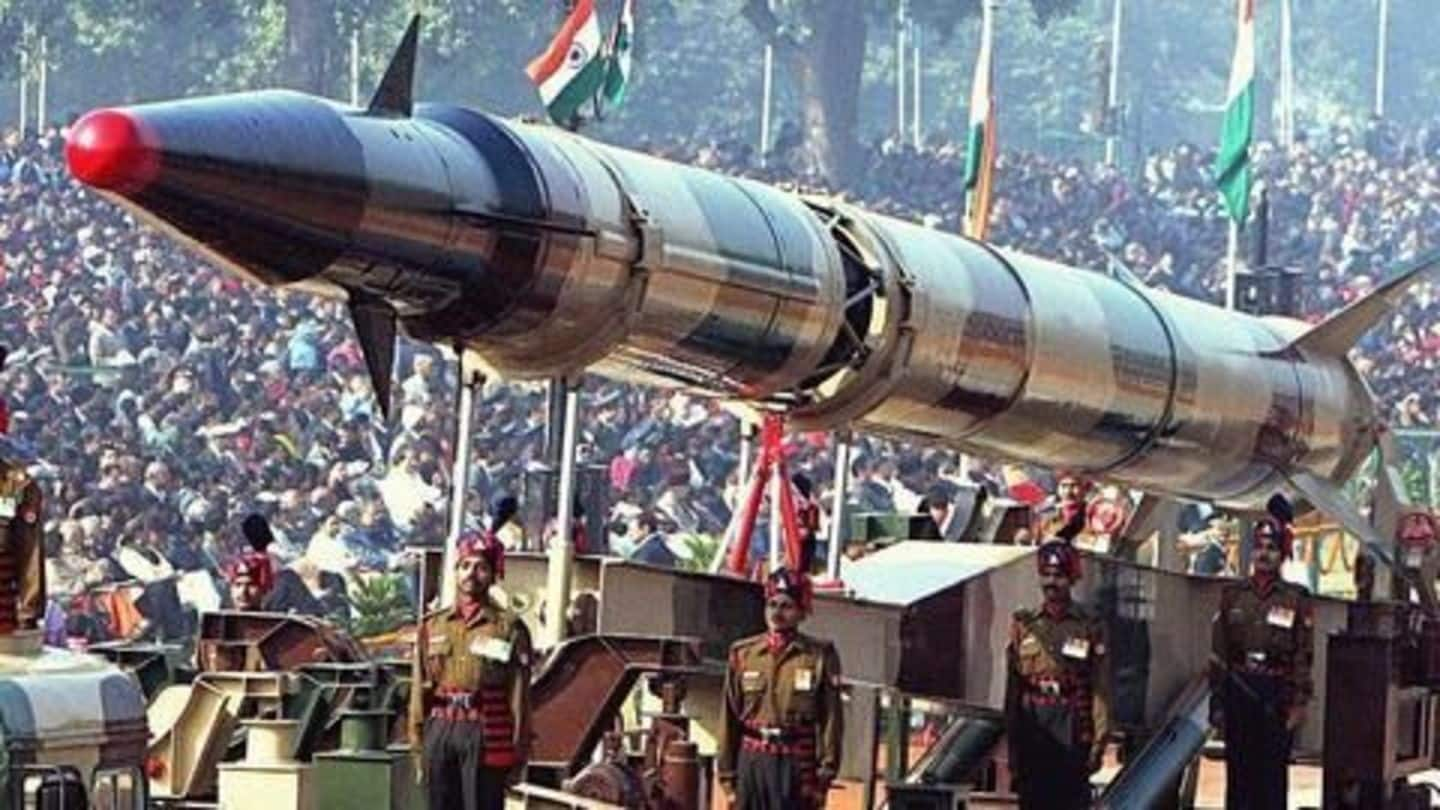
A look at India's nuclear weapons capabilities
What's the story
On June 2, India successfully test-fired its indigenously developed nuclear-capable Prithvi-II missile. The missile, which has a range of 350km, was launched at the Integrated Test Range at Chandipur in Odisha at 9:50am. The Prithvi-II missile is one of several different delivery systems India possesses to launch nuclear weapons. In this timeline, we explain the components of India's strategic nuclear weapons program.
Details
India's various delivery systems to deploy nuclear weapons
India has an estimated 106 nuclear warheads, according to the US-based disarmament advocacy Bulletin of the Atomic Scientists. However, for them to be deployed against the enemy, different kinds of delivery systems are used. India has operationalized the land-based Prithvi and Agni series ballistic missiles, air-based delivery systems such as the Indian Air Force's Jaguar and Mirage-2000 fighter jets and ship-based Dhanush ballistic missiles.
Do you know?
India: No first use of nuclear weapons
After the 1998 nuclear tests, India declared a 'no-first-use' policy, saying it would not use nuclear weapons, unless as a response to a nuclear attack. India's nuclear weapons are meant to deter its arch rivals Pakistan and China from using their nuclear warheads against it.
Land-based
India has an estimated 56 nuclear warheads for land-based missiles
India has a total of 24 nuclear warheads capable of being mounted on Prithvi-II ballistic missiles, according to the Bulletin of Atomic Scientists. It has another 20 Agni-I ballistic missiles (700km range), 6 Agni-II (2000km) and 4 Agni-III (3000km) ballistic missiles. The shorter ranged Prithvi-II, Agni-I and Agni-II are more Pakistan-specific. The Agni-III, and the under development Agni-IV (3500km) and Agni-V (5000km) are China-specific.
Do you know?
India's nuclear triad gives it all-round protection
India has a nuclear triad, meaning nuclear weapons can be deployed by air, ground as well as the sea; guaranteeing a second strike, should one of these mechanisms be targeted. China has a triad capability but Pakistan doesn't.
Air-based
IAF fighter jets can deliver estimated 48 nuclear warheads
Fighter jets operated by the Indian Air Force (IAF) can deliver an estimated 48 out of India's 106 nuclear warheads, making them the second most crucial arm of India's nuclear weapons capabilities. The Mirage-2000 warplanes can deliver 32 nuclear warheads while the Jaguars can deliver 12. India is planning to modify 42 advanced Sukhoi-30MKI fighters to launch nuclear-capable supersonic Brahmos missiles.
Sea-based
India's sea-based nuclear program developing fast
India has an estimated two ship-launched 350-km range Dhanush ballistic missile, which could be fitted with nuclear warheads from sea. India is also working towards the development of 750km K-15 Sagarika submarine-launched ballistic missiles (SLBM) and the 3500km K-4 SLBM. These will be deployed on India's Arihant-class nuclear powered ballistic missile submarines. Last year, the INS Arihant was reportedly commissioned, completing India's triad capability.